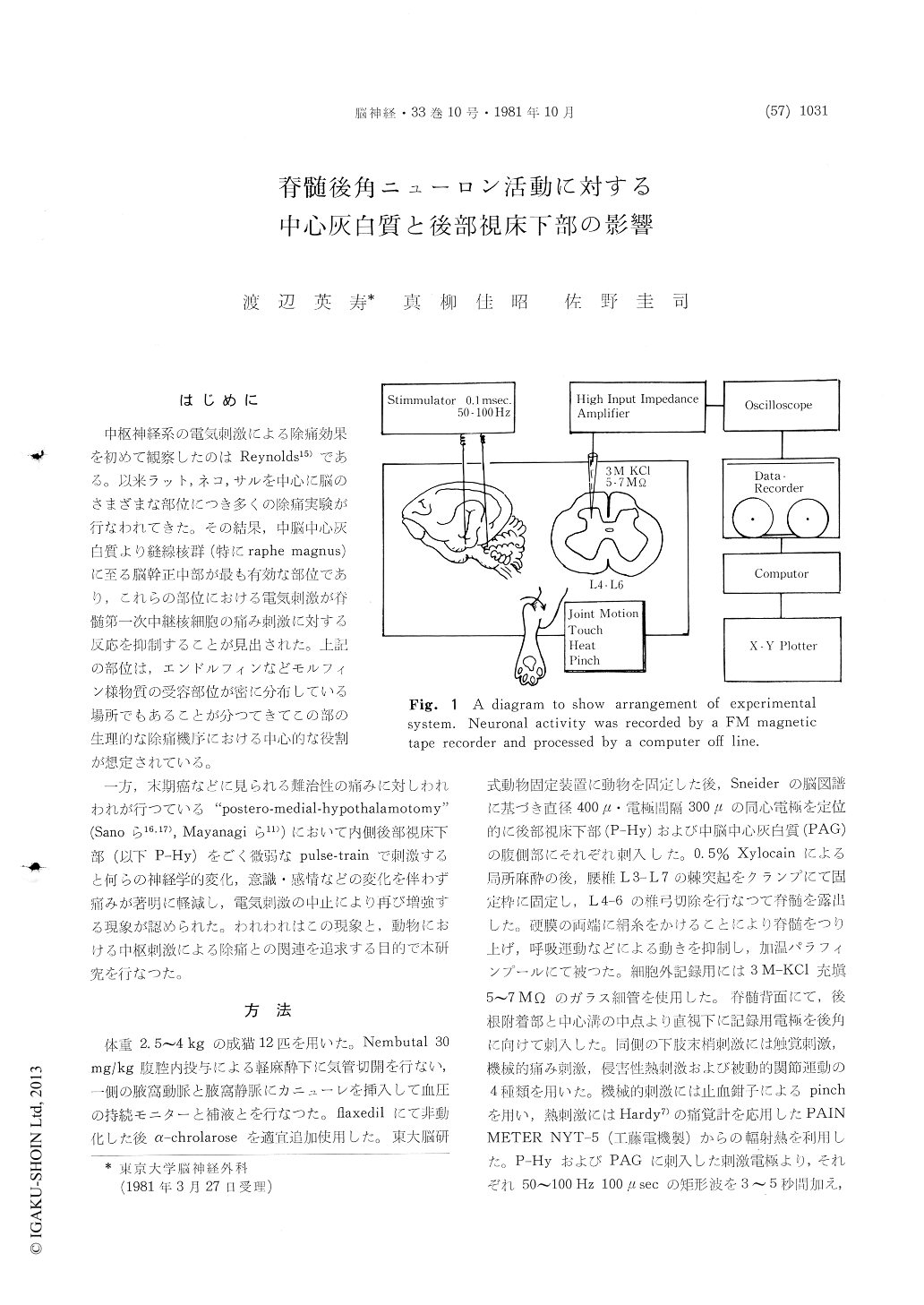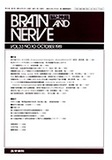Japanese
English
- 有料閲覧
- Abstract 文献概要
- 1ページ目 Look Inside
はじめに
中枢神経系の電気刺激による除痛効果を初めて観察したのはReynolds15)である。以来ラット,ネコ,サルを中心に脳のさまざまな部位につき多くの除痛実験が行なわれてきた。その結果,中脳中心灰白質より縫線核群(特にraphe magnus)に至る脳幹正中部が最も有効な部位であり,これらの部位における電気刺激が脊髄第一次中継核細胞の痛み刺激に対する反応を抑制することが見出された。上記の部位は,エンドルフィンなどモルフィン様物質の受容部位が密に分布している場所でもあることが分つてきてこの部の生理的な除痛機序における中心的な役割が想定されている。
一方,末期癌などに見られる難治性の痛みに対しわれわれが行つている"postero-medial-hypothalamotorny"(Sanoら16,17),Mayanagiら11))において内側後部視床下部(以下P-Hy)をごく微弱なpulse-trainで刺激すると何らの神経学的変化,意識・感情などの変化を伴わず痛みが著明に軽減し,電気刺激の中止により再び増強する現象が認められた。われわれはこの現象と,動物における中枢刺激による除痛との関連を追求する目的で本研究を行なつた。
The purpose of present investigation is to clarify the analgesic effect induced by electrical stimula-tion of the posterior hypothalmic area (P-Hy) of the cat. On 12 cats, comparison was made between the effect of P-Hy stimulation and periaqueductal gray matter (PAG) stimulation on the evoked unit activity of interneuron of the dorsal horn at L4-6 level.
The spinal cord was exposed under light Nem-butal anesthesia. Animals were paralized with Galamine and artificially ventilated. Recordings were made with aid of glass micropippetes filled with 3M-KC1 (5-8 M ohm). Two concentric bipoler electrodes were stereotaxically inserted into the P-Hy and the PAG. For brain stimulation, trains of rectangular pulses (0.1msec, 50-100/sec) were used, and for peripheral stimulation, light touch, noxious radiant heat, pinch and passive joint motion were used.
Results
The cells of the dorsal horn were classified in four classes accordig to their response to the various stimuli ; 11 cells were activated only by light touch (class A), 16 cells by thouch, noxious heat and pinch (class B), 20 cells by heat and touch (class C), 13 cells only by joint motion (class D). Judging from the depth of the electrode tip, cells were arranged almost in the order of class A, B, C, D from the dorsal surface. Brain stimulation inhibited the evoked activity of only 5% of class A and D cells. In contrast, the evoked activity of 80% of class B and C cells was inhibited by brain stimulation. The minimal current required for the inhibition seemed less in the PAG than in the P-Hy.
These findings suggested that the location witch shows analgesic effect by electrical stimulation is not confined at the PAG but extends into the posterior hypothalamic area.

Copyright © 1981, Igaku-Shoin Ltd. All rights reserved.


